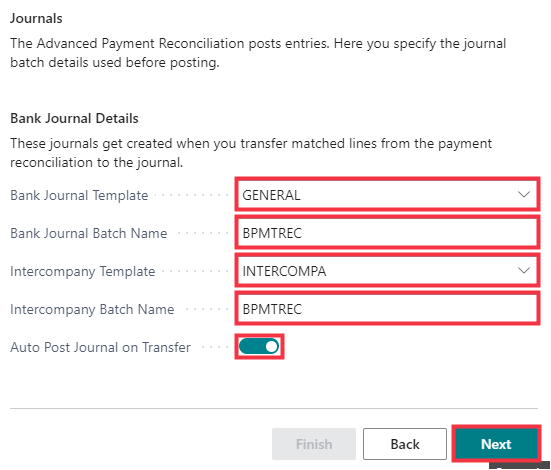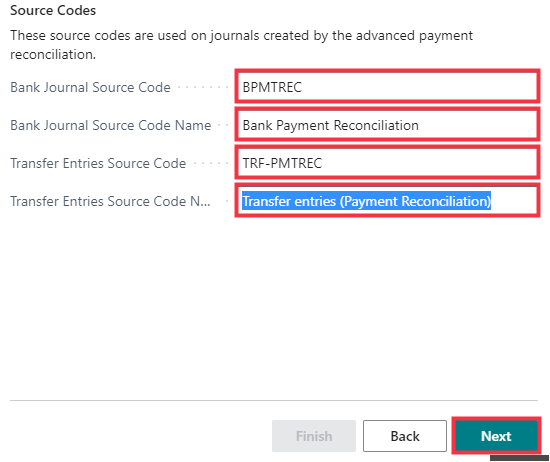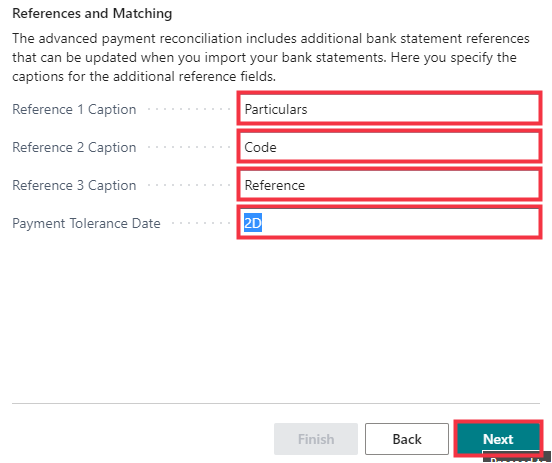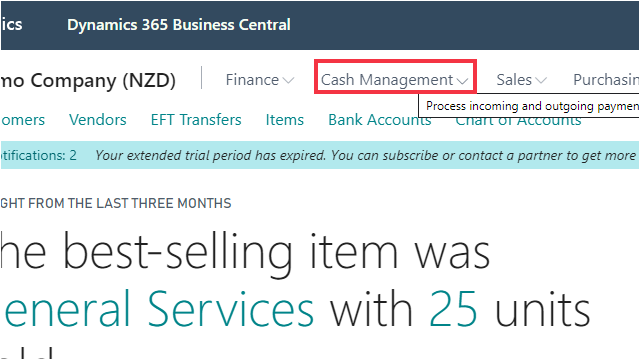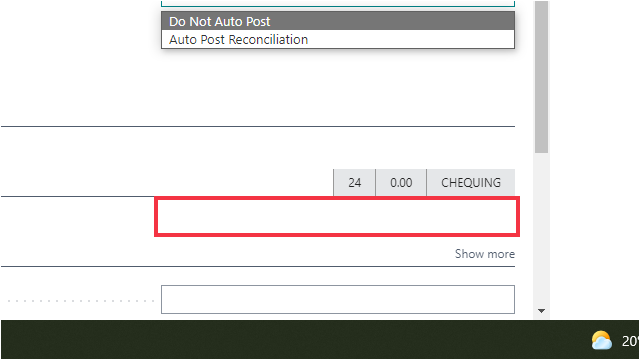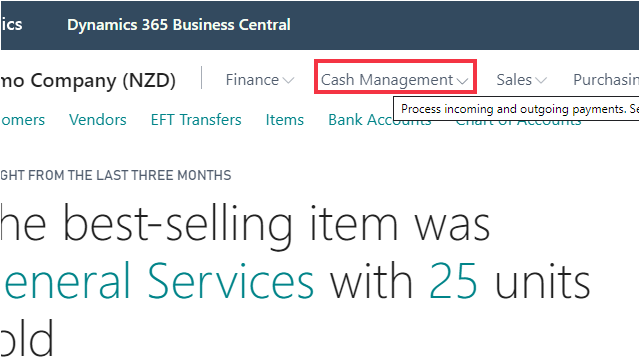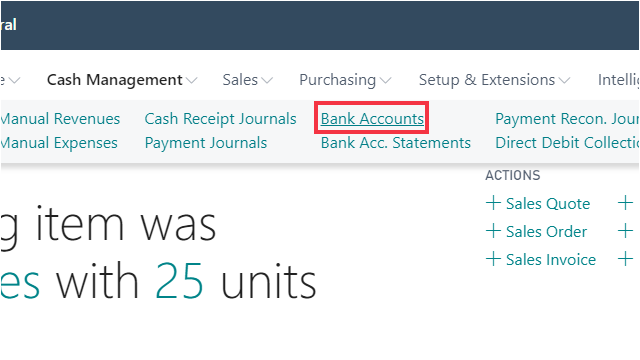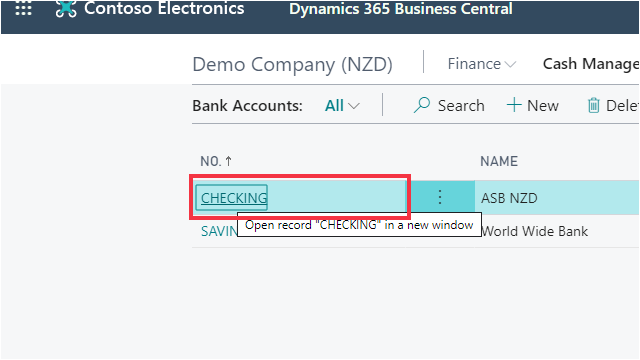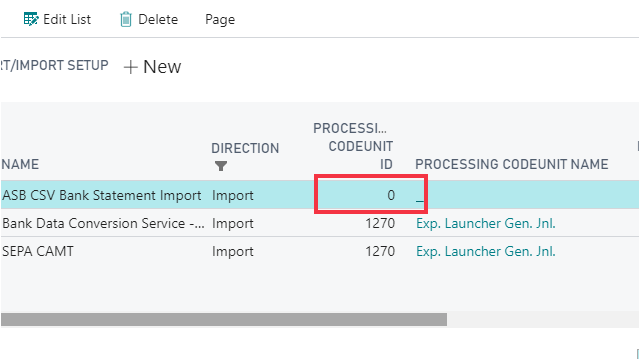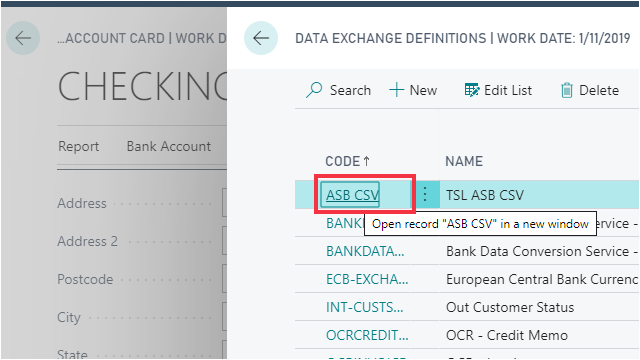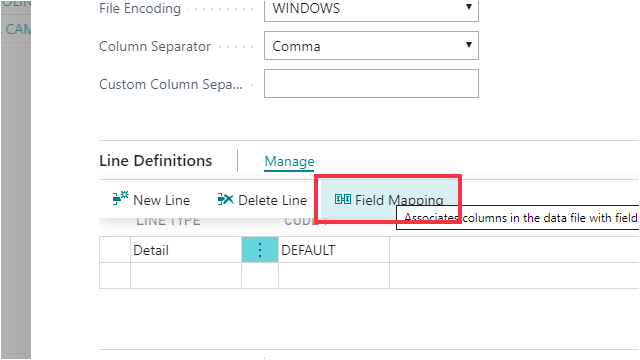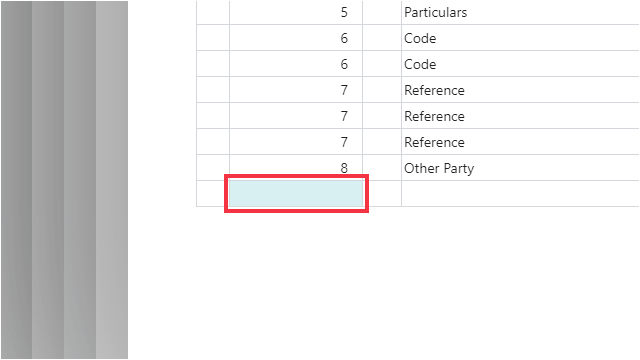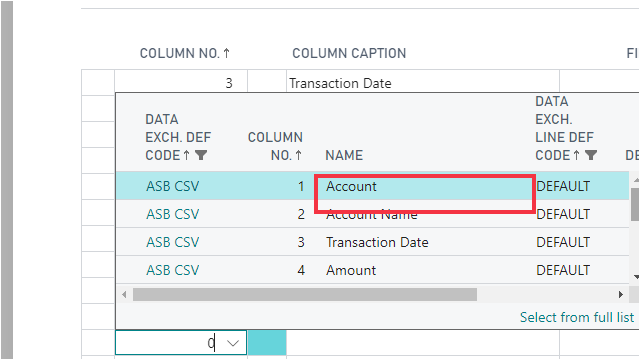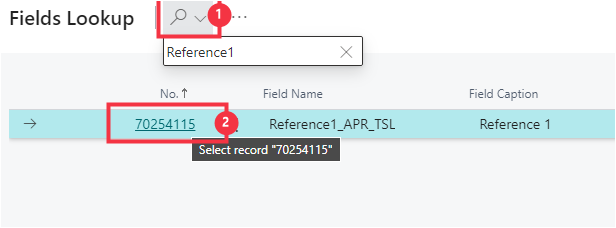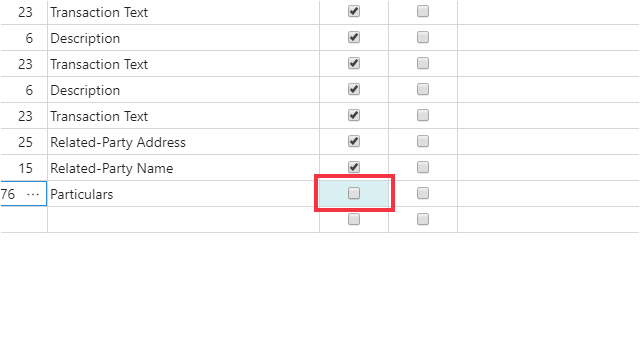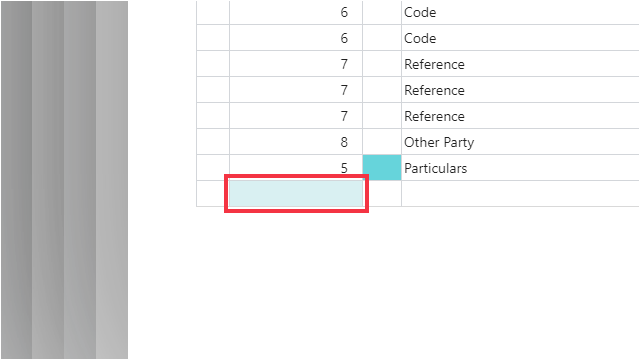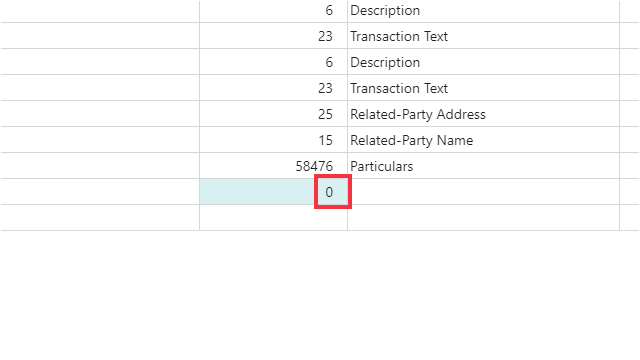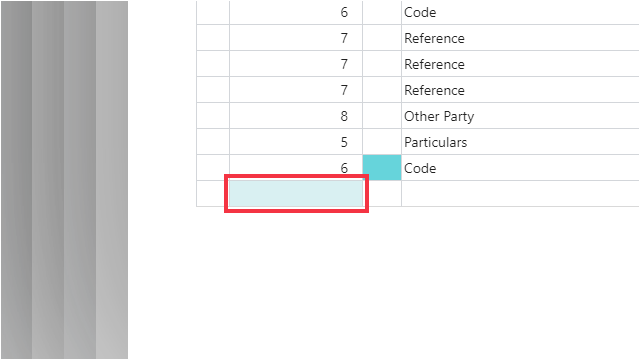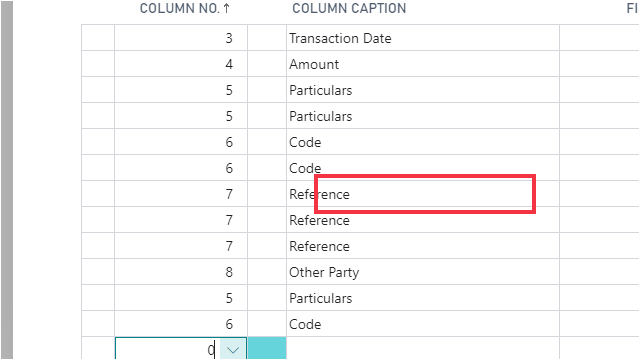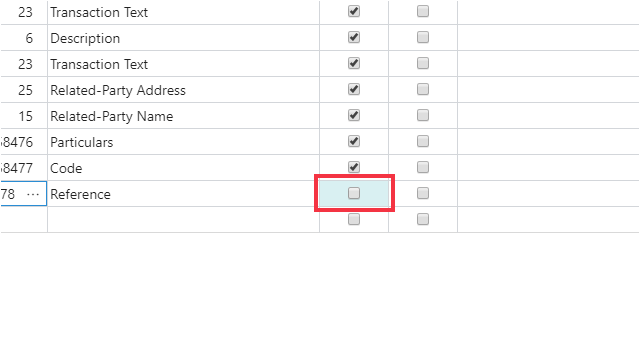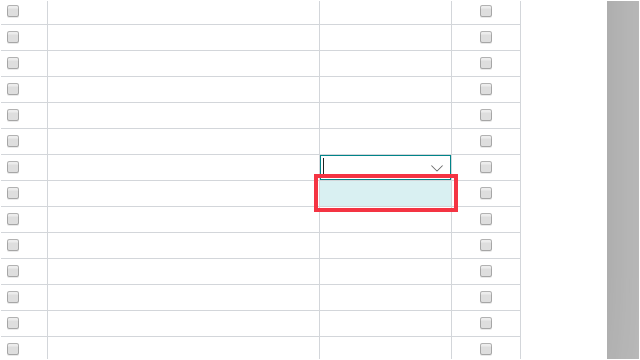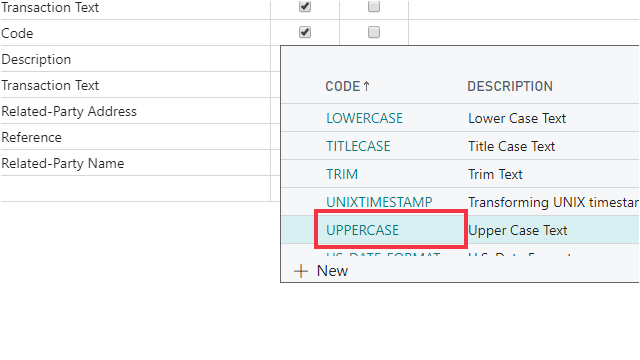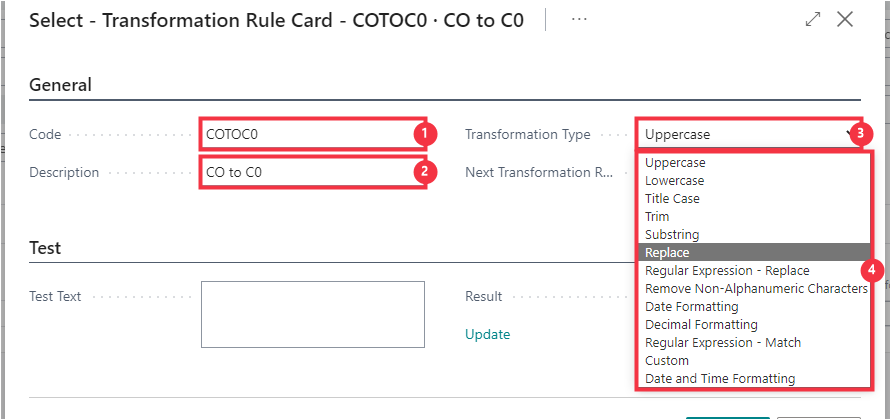Setup
Menu1.1 Setup Wizard
Or Search as follows.
- Set the field Bank Journal Template.
The journal template used for creating journal entries after matching the bank statement lines. This is normally GENERAL. - Set the field Bank Journal Batch Name.
The journal batch name used for creating journal entries after matching the bank statement lines. BPMTREC is a new batch installed by the extension, but you can change it here. - Set the field Intercompany Template.
The Intercompany Journal template name used for creating intercompany journal entries after matching the bank statement lines with an IC partner. - Set the field Intercompany Batch Name.
The Intercompany Journal batch name used for creating intercompany journal entries after matching the bank statement lines with an IC partner. - Click on the Auto Post Journal on Transfer toggle.
Engage this toggle this field if you want the system to automatically post the journal entries resulting from the payment reconciliation matching when you transfer the matched entries to journal. - Click on the button Next.
1.2 Settings in the Bank Account Card
- Click on the button Show more on the General tab.
- You can select the standard Match Tolerance Type Percentage or Amount. When matching statement lines in the Payment Reconciliation worksheet, the system will find matching ledger entry amounts including this tolerance, irrespective of the statement amount sign. Depending on your selection in Match Tolerance Type, enter the Match Tolerance Value.
- This extension adds the Filter Payment Reconciliation. The payment reconciliation page will be automatically filtered for this account if set.
- Also added is the Auto Post Bank Reconciliation which specifies if the journal will be posted and matched automatically.
1.3 Field Mappings in the Data Exchange Definition Setup
If the bank includes Particulars, Reference, Code, and related-party bank account columns in the bank account statement file, make sure these fields are mapped to the related payment reconciliation fields correctly.
If you select the UPPERCASE rule on the Code column, when the bank statement file is imported in the "Bank Account Reconciliation" page, the text in this column will be converted to uppercase.
Furthermore, if you choose to apply the transformation rule in the Data Exchange Definition field mapping, it will be applied on all of the statement lines.
You can choose too apply transformation rules only when matching the statement lines for more flexibility. For instance, if you want to convert the Code to UPPERCASE only when matched to a customer, transformation rule should not be applied here; it should be defined on the Matching Rules.
You can create a Transformation Rule to correct a possible mistake on a Customer's payment references and apply it to Automatic Matching Rules. Here is an example of correcting a reference entered as the letter C and letter O rather than the number 0 (zero) for customer numbers starting with a C and followed by 5 numbers.
We will transform a reference entered as the letter C and letter O rather than the number 0 (zero).
- Click on the field Find Value - Enter the text CO.
- Click on the field Replace Value - Enter the text C0.
- Click on the textarea Test Text - Enter the text CO1234.
- Click on the field Update.
- See the Result to see the letter C followed by numbers zero, one, two, three, four.
- Click on the button OK.
See more details on standard Business Central Data Exchange Definitions and Transformation Rules at https://docs.microsoft.com/en-nz/dynamics365/business-central/across-how-to-set-up-data-exchange-definitions




